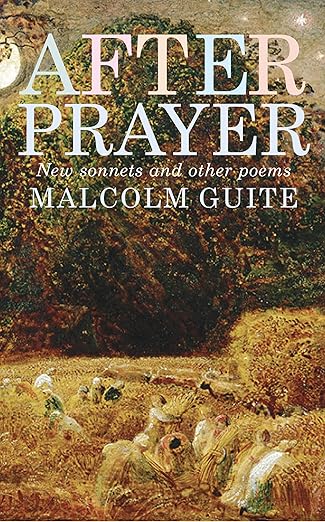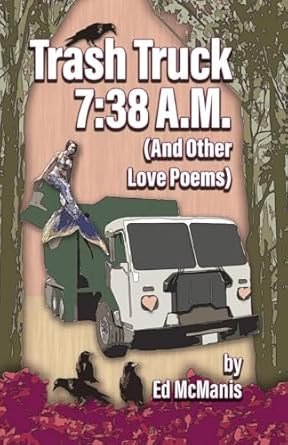 Adés’ latest collection, A Blink of Time’s Eye, strikes me as his best yet, using the kinds of reflection and reminiscence that come with a mature perspective, to find meaning in the present. Like all good poetry it has a way of transcending time even as it is bound by it. A Blink of Times’ Eye is an introspective, lyrical collection that explores the many things that are lost, and what is held through time. The book is structured into four sections, each focused on time in one sense or another – future, past, present and an imagined, conjured past – let’s call it Anemoia – a longing mingling with nostalgia for an alternative pathway – something not bodily experienced.
Adés’ latest collection, A Blink of Time’s Eye, strikes me as his best yet, using the kinds of reflection and reminiscence that come with a mature perspective, to find meaning in the present. Like all good poetry it has a way of transcending time even as it is bound by it. A Blink of Times’ Eye is an introspective, lyrical collection that explores the many things that are lost, and what is held through time. The book is structured into four sections, each focused on time in one sense or another – future, past, present and an imagined, conjured past – let’s call it Anemoia – a longing mingling with nostalgia for an alternative pathway – something not bodily experienced.
Read more →
 We have a copy of Behind These Four Walls by Yasmin Angoe to give away!
We have a copy of Behind These Four Walls by Yasmin Angoe to give away! With each individual section of the poem carefully translated from the original Spanish, the book length poem begins within the space of a home, a room and the day, exploring the natural landscape, a setting based on Zaro’s childhood growing up in rural Northern Spain, and the interrelationship between a father and son.
With each individual section of the poem carefully translated from the original Spanish, the book length poem begins within the space of a home, a room and the day, exploring the natural landscape, a setting based on Zaro’s childhood growing up in rural Northern Spain, and the interrelationship between a father and son. Adés’ latest collection, A Blink of Time’s Eye, strikes me as his best yet, using the kinds of reflection and reminiscence that come with a mature perspective, to find meaning in the present. Like all good poetry it has a way of transcending time even as it is bound by it. A Blink of Times’ Eye is an introspective, lyrical collection that explores the many things that are lost, and what is held through time. The book is structured into four sections, each focused on time in one sense or another – future, past, present and an imagined, conjured past – let’s call it Anemoia – a longing mingling with nostalgia for an alternative pathway – something not bodily experienced.
Adés’ latest collection, A Blink of Time’s Eye, strikes me as his best yet, using the kinds of reflection and reminiscence that come with a mature perspective, to find meaning in the present. Like all good poetry it has a way of transcending time even as it is bound by it. A Blink of Times’ Eye is an introspective, lyrical collection that explores the many things that are lost, and what is held through time. The book is structured into four sections, each focused on time in one sense or another – future, past, present and an imagined, conjured past – let’s call it Anemoia – a longing mingling with nostalgia for an alternative pathway – something not bodily experienced.  Tess Perko talks to her daughter, Rachael Brandt about her debut novel, Learning to Whistle , on writing stories that empower women, her inspiration, her writing process, the hardest part of writing a novel for her, her new work-in-progress, and lots more.
Tess Perko talks to her daughter, Rachael Brandt about her debut novel, Learning to Whistle , on writing stories that empower women, her inspiration, her writing process, the hardest part of writing a novel for her, her new work-in-progress, and lots more.  The appeal of the book as poetic material has its good points: Good poetic diction, deep thought, formal structure, well developed themes, knowledge of the subject matter, good organization. The weaker points are these; Malcolm Guite does not seem to be a gifted rhymer or one who can rhyme without any difficulty giving perfect rhymes.
The appeal of the book as poetic material has its good points: Good poetic diction, deep thought, formal structure, well developed themes, knowledge of the subject matter, good organization. The weaker points are these; Malcolm Guite does not seem to be a gifted rhymer or one who can rhyme without any difficulty giving perfect rhymes. Working in the spirit of haikyo exploration culture, which emphasizes observation and documentation, Kuyatt builds poems that revel in specificity: a bowling alley with one hundred and eight unused lanes, a mostly shuttered mall in which a man tends aloe vera. Reading these poems through the lens of Kuyatt’s linked interests—meaning-making and ephemerality—we can appreciate why one might garden in a failing space.
Working in the spirit of haikyo exploration culture, which emphasizes observation and documentation, Kuyatt builds poems that revel in specificity: a bowling alley with one hundred and eight unused lanes, a mostly shuttered mall in which a man tends aloe vera. Reading these poems through the lens of Kuyatt’s linked interests—meaning-making and ephemerality—we can appreciate why one might garden in a failing space. Act one opens with scattered recollections of her family, well set in the preternatural twilight of childhood memories alongside the more straightforward development of her early acting. From a class where she may have been half the age of the second youngest to serious auditions, one travels with Capshaw through the tempest of a life lived too early.
Act one opens with scattered recollections of her family, well set in the preternatural twilight of childhood memories alongside the more straightforward development of her early acting. From a class where she may have been half the age of the second youngest to serious auditions, one travels with Capshaw through the tempest of a life lived too early. We are taken in with the story of the daughter who has been hurt and is in hospital, but the observations and comments are fully poetic, allowing the reader to experience the sensations of mother and child in the rhythms and sounds of the words. In some of the poems a very discreet sense of humour is hidden. It is interesting to encounter one poem with a bit of history about Psychiatry services and English law about Leucotomy (Lobotomy) and art therapy.
We are taken in with the story of the daughter who has been hurt and is in hospital, but the observations and comments are fully poetic, allowing the reader to experience the sensations of mother and child in the rhythms and sounds of the words. In some of the poems a very discreet sense of humour is hidden. It is interesting to encounter one poem with a bit of history about Psychiatry services and English law about Leucotomy (Lobotomy) and art therapy. In A Different Kind of Power Jacinta Ardern gives some space to the ad hominem criticism she received while trying to bring about a fairer and more humane society in which no one was left behind. After first becoming a Member of Parliament in New Zealand, in 2008, she rose to the Prime Ministership, serving from 2017 to 2023. Her reader-friendly book is humorous in places, frank about her experiences as a woman and a mother, and a good introduction to present-day New Zealand.
In A Different Kind of Power Jacinta Ardern gives some space to the ad hominem criticism she received while trying to bring about a fairer and more humane society in which no one was left behind. After first becoming a Member of Parliament in New Zealand, in 2008, she rose to the Prime Ministership, serving from 2017 to 2023. Her reader-friendly book is humorous in places, frank about her experiences as a woman and a mother, and a good introduction to present-day New Zealand. There aren’t many love poetry books written to celebrate the mundane. In his new chapbook, Ed McManis writes a series of odes to mature, long-lasting love, exploring the nature of ongoing compromise, of the joy of co-existing with difference and dissent, of lost dreams and the ongoing anxieties of parenting, aging, and loss.
There aren’t many love poetry books written to celebrate the mundane. In his new chapbook, Ed McManis writes a series of odes to mature, long-lasting love, exploring the nature of ongoing compromise, of the joy of co-existing with difference and dissent, of lost dreams and the ongoing anxieties of parenting, aging, and loss. Levine takes gems from his blogs and workshop material to create the frame for the book. “The Poetry Manuscript: Arts and Crafts” serves as an introduction to the granular exploration of what he calls “the art of transforming individual poems into a transcendent whole.” Every chapter Levine contributes requires poets to dive deeper into creative self-awareness.
Levine takes gems from his blogs and workshop material to create the frame for the book. “The Poetry Manuscript: Arts and Crafts” serves as an introduction to the granular exploration of what he calls “the art of transforming individual poems into a transcendent whole.” Every chapter Levine contributes requires poets to dive deeper into creative self-awareness.